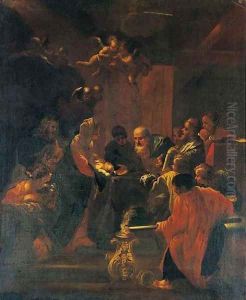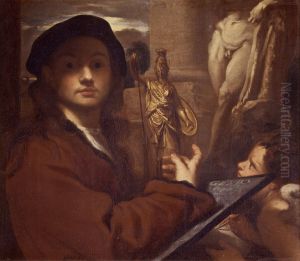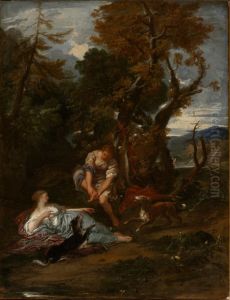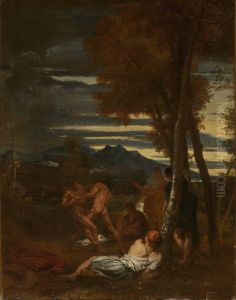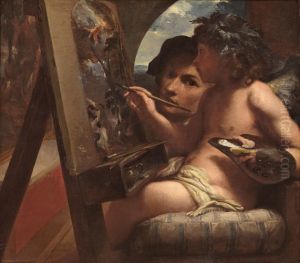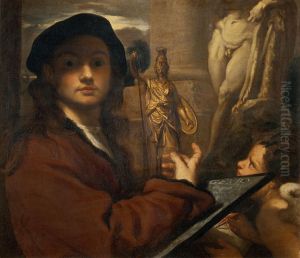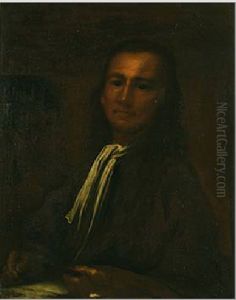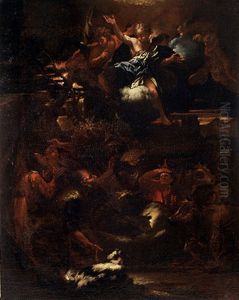Livio Mehus Paintings
Livio Mehus, also known as Livio Meus or Livio Nemeo, was an Italian painter and engraver of the Baroque period, born in Oudenaarde, now in Belgium, in 1630. His artistic journey began in his homeland, but his talent soon took him to Italy, which was the epicenter of the Baroque artistic revolution. Mehus is particularly associated with the city of Florence, where he spent a significant portion of his career and where his work contributed to the vibrant artistic culture of the period.
Mehus was initially trained by his father, who was also an artist, before moving to Italy to further his studies. In Florence, he became a student of the painter Pietro da Cortona, one of the leading artists of the Baroque period. Under Cortona's guidance, Mehus honed his skills in painting, particularly excelling in fresco and oil painting. His work is characterized by dynamic compositions, a rich palette, and a remarkable ability to capture light, all of which are hallmarks of the Baroque style.
Throughout his career, Mehus received numerous commissions for religious and secular works, including altarpieces, portraits, and decorative frescoes. One of his most notable contributions is his work in the Palazzo Pitti and the Boboli Gardens in Florence, where his frescoes still stand as a testament to his skill and creativity. Despite his Flemish origins, Mehus fully embraced the Italian style, and his work is a unique blend of Northern European influences and the Italian Baroque tradition.
Mehus also played a significant role in the artistic community of Florence, influencing a number of younger artists and contributing to the city's artistic legacy. His work was well-regarded by his contemporaries, and he was known for his ability to blend dramatic intensity with delicate detail, making his paintings highly sought after by patrons of the arts.
Livio Mehus passed away in Florence in 1691, leaving behind a body of work that continues to be admired for its artistic excellence and for its contribution to the Baroque movement. His paintings can be found in various museums and collections, serving as a lasting legacy of an artist who bridged the cultural and artistic traditions of Northern Europe and Italy during one of the most dynamic periods in art history.
